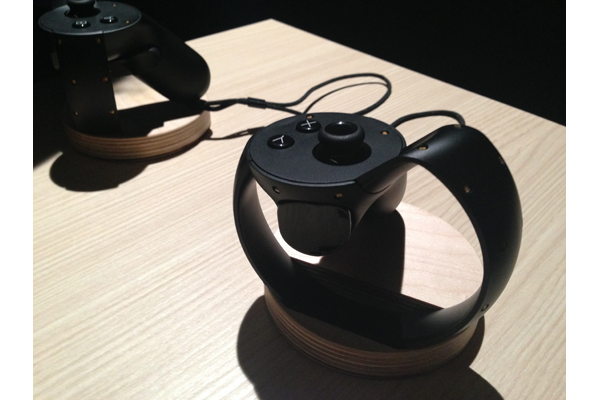Oculus’ April Software Update Includes Better Three-Sensor Support, Extended Touch Compatibility
Oculus started rolling out the April update to its desktop software, Version 1.14, which embraces three-sensor configuration with a guided setup process and extends Touch support to gamepad-only games.
Oculus launched the Touch motion controllers in early December 2016, and the company has maintained a regular software update regiment ever since. Following the Touch release, many customers complained of tracking issues that resulted in poor experiences. Oculus committed to monthly updates to correct bugs promptly, and while it continues to improve tracking issues with each software update, the company is now moving its focus from two-sensor configurations to three-sensor configurations.
When Oculus announced the Touch controllers, the company intended to support forward facing 180-degree configurations, but it wasn’t talking about 360-degree tracking, and room-scale configurations like HTC and Valve were. By the time Oculus launched the Touch controllers, its tune had changed somewhat. The company announced at Oculus Connect 3 that Touch would support 360-degree and room-scale configurations if you purchase a third sensor. When the Touch controllers hit the market, however, those configurations were labeled experimental. You could configure the room with three or more sensors, but you were on your own if you ran into problems. Officially, Oculus supported two-sensor configurations. Semi-officially, the company supported three-sensor setups. More than three sensors is not advised.
With the release of version 1.14 of the Oculus desktop software, Oculus took a step closer to full official support. The new version of the desktop software includes a guided setup procedure for three-sensor configurations to help you get the best possible tracking. Version 1.14 automatically detects if you have three sensors plugged in and prompts you to run the three-sensor configuration if you do.
Oculus desktop software version 1.14 also improves the versatility of the Touch controllers. Once you have the new update installed, you’ll notice that some games which used to be gamepad-only titles now support Touch controllers. Oculus software 1.14 doesn’t magically enable motion controls in games that aren’t designed for them, but it does let you use the Touch controllers instead of a gamepad for input in the game. Oculus Touch controllers feature most of the buttons included on the Xbox One controllers, so the change makes sense, especially because the update maps the Touch controller’s buttons to emulate the Xbox One controller’s inputs. Gamepad games that support Touch will include a “Touch (as gamepad)” label.
Oculus rolls out its desktop software updates in a staggered release. Some people received the update late April 20, 2017, but it might be a few days before you see the update on your system. For more information, see the software release notes and Nate Mitchell’s announcement.
Get Tom's Hardware's best news and in-depth reviews, straight to your inbox.
Kevin Carbotte is a contributing writer for Tom's Hardware who primarily covers VR and AR hardware. He has been writing for us for more than four years.
